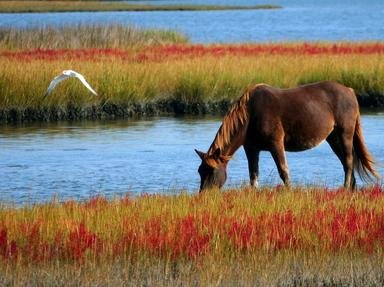Quiz Answer Key and Fun Facts
1. The first native breed of horse or pony is this highly strung, eye catching driving breed, a wonderful sight flying round the main ring at the larger county shows. Which harness horse/pony am I referring to here?
2. This second native horse breed is principally used as a carriage horse. Examples of the breed are to be found in the Royal Mews.
3. There are three main heavy horse breeds considered to be native to the UK - do you know which one is native to East Anglia?
4. OK, moving from horse breeds to one of our pony breeds. There are two very similar breeds of native pony in the north - which one originates from the Yorkshire / Northumberland areas?
5. We move to the southwest of England for the next native pony breeds. Made famous as the subject of the children's classic book "Moorland Mousie", which breed am I referring to?
6. Still in the southwestern corner of England we find another versatile pony which, at one period of time, had to number the British army as one of the factors contributing to its dwindling numbers.
7. We now head north to find the home of the second of the heavy horse breeds covered in this quiz. This time I am looking for a Scottish breed.
8. Now for the second of the two similar pony breeds from the north of England. This one comes from the west of the Pennines.
9. On to another of our UK heavy horse breeds, this is perhaps the one that most people will recognise. Their most striking characteristic - their size!
10. And finally - back to Scotland for the last breed, one in which HM Queen Elizabeth II takes a great personal interest, owning her own stud farm based at Balmoral.
Source: Author
cjt62
This quiz was reviewed by FunTrivia editor
Tizzabelle before going online.
Any errors found in FunTrivia content are routinely corrected through our feedback system.
